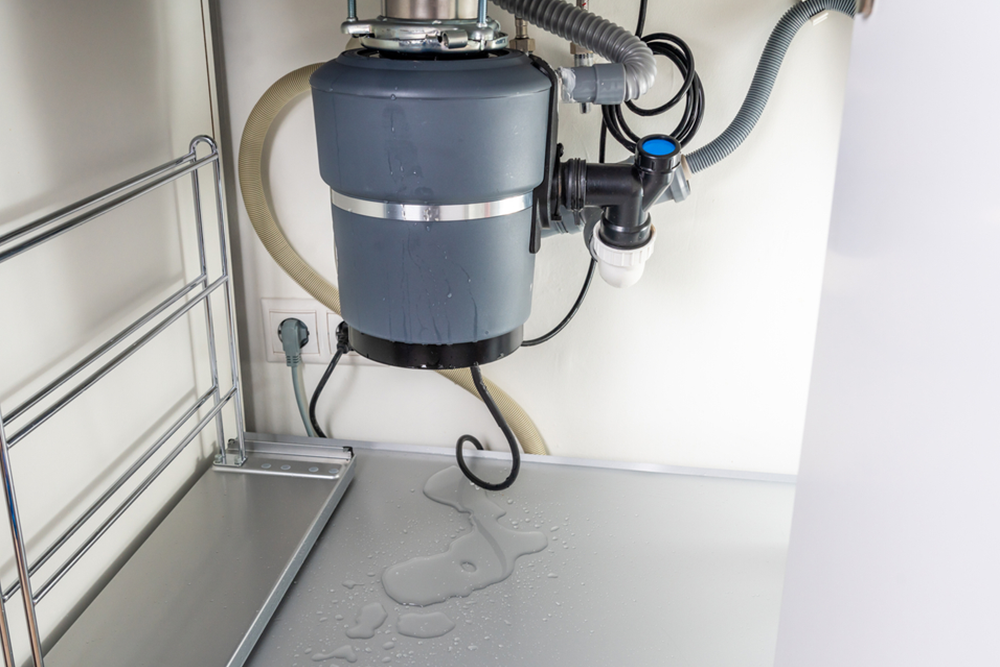Speedy Solutions for Fixing a Dripping Waste Disposal Unit
Speedy Solutions for Fixing a Dripping Waste Disposal Unit
Blog Article
Here in the next paragraph you can locate more helpful details in regards to Garbage Disposal Leaking From Bottom.

Garbage disposals are necessary kitchen area devices that aid in throwing away food waste successfully. Nevertheless, a leaking waste disposal unit can be an aggravating and untidy issue to manage. Luckily, lots of leakages can be repaired quickly with a couple of simple steps. In this write-up, we will certainly review just how to take care of a leaking garbage disposal successfully.
Introduction
Garbage disposals are set up under cooking area sinks and are made to shred food waste right into smaller sized items, permitting it to travel through the pipes system conveniently. While these tools are normally reliable, leaks can take place gradually because of deterioration, loose links, or damage to the unit.
Usual Root Causes Of Leaks in Rubbish Disposals
Worn Seals and Gaskets
Seals and gaskets play a crucial role in avoiding water from leaking out of the waste disposal unit. With time, these elements can weaken, leading to leaks around the disposal system.
Loose Connections
The connections between the garbage disposal and the plumbing system can become loosened gradually, triggering water to leak out throughout procedure.
Cracks or Openings in the Disposal Unit
Physical damages to the garbage disposal, such as fractures or holes in the real estate, can likewise cause leakages.
Identifying the Resource of the Leakage
Prior to trying to deal with a dripping garbage disposal, it is vital to recognize the source of the leak. This can usually be done with visual inspection or by performing basic examinations.
Visual Evaluation
Inspect the waste disposal unit unit meticulously for any type of indicators of water leakage. Pay close attention to locations around seals, gaskets, and connection factors.
Testing for Leakages
One way to evaluate for leakages is by running water through the disposal device and looking for any type of noticeable signs of leakage.
Devices and Materials Needed for Repairing a Leaking Waste Disposal Unit
Before beginning the repair process, collect the required tools and products, consisting of a screwdriver, adjustable wrench, plumbing's putty, substitute seals or gaskets, and epoxy or patching material for repairing cracks or holes.
Step-by-Step Overview to Dealing With a Dripping Waste Disposal Unit
Shut off the Power
Before attempting any kind of repair services, make sure that the power to the garbage disposal device is shut off to prevent the risk of electrical shock.
Find the Leakage
Determine the specific place of the leakage and identify the reason.
Tighten Connections
Make use of a wrench to tighten any type of loose links between the disposal unit and the pipes system.
Change Seals or Gaskets
If the leak is due to used seals or gaskets, get rid of the old elements and replace them with new ones.
Patching Fractures or Holes
For splits or openings in the disposal unit, use epoxy or an appropriate patching material to seal the damaged area.
Examining the Garbage Disposal After Repair Service
Once the repair service is full, check the waste disposal unit by running water via it to make certain that the leakage has been fixed.
Preventive Maintenance Tips to Stay Clear Of Future Leakages
To avoid future leakages, it is vital to do routine upkeep on your waste disposal unit. This includes maintaining it clean, staying clear of putting non-food things or hard things down the disposal, and periodically looking for leaks or other concerns.
Final thought
Finally, repairing a dripping waste disposal unit is a relatively simple procedure that can be finished with standard tools and materials. By complying with the actions described in this article and exercising preventive upkeep, you can keep your waste disposal unit in good working condition and stay clear of expensive repair services in the future.
HERE’S HOW TO FIX YOUR GARBAGE DISPOSAL
WHAT TO DO IF SOMETHING IS STUCK IN YOUR GARBAGE DISPOSAL
If the impeller won’t turn, there’s probably something stuck in the disposal. It could be a steak bone or peach pit, although plumbers report pulling all sorts of inappropriate objects out of disposals, such as bottle caps or aluminum foil. Make sure power to the disposal is off, and look inside to see if you can see the source of the jam.
Never stick your fingers in a disposal. Pull out anything you see with tongs or pliers.
If the disposal still won’t work, it may be time to call a plumber or consider buying a new disposal. GEM Plumbing & Heating is here for all of your garbage disposal needs.
WHAT TO DO IF YOUR GARBAGE DISPOSAL DRAIN IS CLOGGED
Take everything out from underneath your sink and put a bucket or other container under your disposal to catch any water that drains out. Disconnect your disposal from the power supply. If it’s plugged into a wall outlet, unplug it. If it’s hardwired into an electrical box, go to the electrical panel and turn off the breaker for the disposal. Pour ¼ cup of baking soda into the drain, followed by ½ cup of white vinegar. Give the solution a few minutes to fizz and do its work. Look into the disposal with a flashlight to see if you can see an object that might be causing the clog. If you see it, remove it using tongs or pliers. MORE TIPS ON DEALING WITH A CLOGGED GARBAGE DISPOSAL
Never use drain cleaner in a garbage disposal. It can damage the plastic parts inside the disposal. You can also be splashed with the caustic liquid while working to clear the clog. Beware! Never stick your fingers into a garbage disposal. Trust us — not a good idea. In many instances, your dishwasher drains through your garbage disposal. This allows the disposal to grind any large food particles that may be drained out of your dishwasher. There are some jurisdictions, however, where the plumbing code prohibits such a connection. WHAT TO DO WHEN YOUR DISHWASHER DRAINS THROUGH THE DISPOSAL
Run some water in the sink so your plunger has at least a ½-inch of water to create a seal and plunge vigorously up and down several times. You may need to repeat this several times. Run hot water down the drain to clear any residue that remains.

As an avid person who reads on Why Is , I thought sharing that short article was a good thing. For those who enjoyed reading our page kindly be sure to share it. Thank you for taking the time to read it.
Set Up An Appointment Report this page